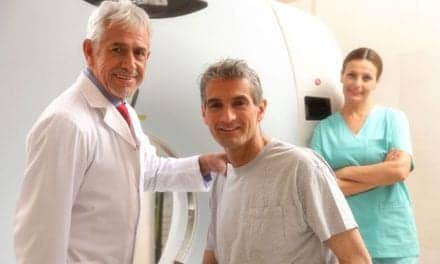
|
The recent review article in the New England Journal of Medicine by Brenner and Hall1 created a sensation and is arousing a great amount of fear among patients and parents of children who are scheduled for CT radiological examinations. Like many calls to the barricades, the authors bring attention to a real potential danger and give sage advice about what needs to be done. There is no question that ionizing radiation can pose dangers and that examinations that administer ionizing radiation should be performed only when indicated. Similarly, there is no dispute that, when possible, an equally satisfactory or even better cross-sectional imaging modality that does not administer ionizing radiation, like ultrasound or MRI, should be the choice. CT or any x-ray or other imaging study should be ordered only for proven and accepted clinical indications. Brenner and Hall are right to point out that many CT examinations performed in this country are repetitive and unnecessary, they could be substituted by other nonionizing radiation approaches, and this practice of ordering unwarranted CT examinations should be abandoned. It is also true that for the first time the cumulative ionizing radiation burden from medically administered examinations has exceeded that from natural sources.
The paper successfully raises our awareness of the dangers of performing unnecessary CT examinations on a routine basis, and particularly doing so in children, but it nevertheless has several flaws:
- It displays multicolored tables with predictions of cancers occurring as a result of CT studies, as if this was a proven fact and not a theory. The linear, no threshold theory of radiation-induced cancer is based on the interpretation of studies on survivors of the atomic blasts in Hiroshima and Nagasaki2 and has many critics of its application to the relatively low doses administered in diagnostic imaging. It is not universally accepted and is rejected by many leading experts.
- The radiation doses and CT techniques quoted and used in this paper for calculating their predictions are not those recommended by the American College of Radiology or the Society of Pediatric Radiology that are widely accepted and applied.3-5
- The paper overlooks the fact that companies manufacturing CT equipment also have been responsive and have developed and recommended the use of dose reduction techniques for children.
- The paper fails to deal with the risk benefit ratio of CT, particularly in life-threatening conditions.
CT is an invaluable diagnostic modality for children and adults. Just as an example of its importance, a panel of leading internists in 2001 chose CT and MRI as the most important innovations in medicine in the last 25 years over others, eg, statins and balloon angioplasty. Interestingly, mammography was chosen as the fifth most important innovation.6
There have in the past been several similar attempts to indict some life-saving important diagnostic imaging studies, eg, breast screening for cancer: from articles predicting that it causes more cancers due to radiation than it saves lives by discovering them, to articles showing that it is a worthless diagnostic procedure. Yet breast cancer screening is generally credited to be responsible for the significant reduction in deaths from breast cancer in the United States.7 Early criticisms, however, have had some benefits, as they have led to improvements in technique, significant reduction in the administered radiation dose, the search for improvements with digital radiography, and recommendations that, for certain conditions, mammography should be followed by either ultrasound or magnetic resonance examinations.
It is therefore of some benefit that articles such as the one by Brenner and Hall will hopefully result in further raising the attention of physicians ordering unnecessary CT examinations. It will perhaps lead to the elimination of total body and head CT screening of self-referred asymptomatic individuals, further enhance training in ultrasonography, and entice the CT manufacturing industry to make greater efforts to develop faster sequences in MRI for infants and very young children who are presently examined under general anesthesia to prevent motion.
It would be tragic if patients and parents, influenced by Brenner and Hall’s article, were to refuse critically needed CT examinations.
Alexander R. Margulis, MD, is clinical professor of radiology at Weill Medical College at Cornell University, New York. For more information, contact .
References
- Brenner DJ, EJ Hall. Computed tomography—an increasing source of radiation exposure. N Engl J Med. 2007;357:2277-84.
- National Research Council, Committee to Assess Health Risks from Exposure to Low Levels of Ionizing Radiation. BEIR Phase 2. Washington, DC: National Academies Press; 2006.
- Boone JM, Geraghty EM, Seibert JA, Wootton-Gorges SL. Dose reduction in pediatric CT: a rational approach. Radiology. 2003;228:352-360.
- Cody DD, Moxley DM, Krugh KT, O’Daniel JC, Wagner LK, Eftekhari F. Strategies for formulating appropriate MDCT techniques when imaging the chest, abdomen, and pelvis in pediatric patients. AJR Am J Roentgenol. 2004;182:849-859.
- American College of Radiology Appropriateness Criteria: conventional and reduced radiation-dose techniques. Radiology. 2003;229:575-580.
- Fuchs VR, Sox HC Jr. Physicians’ view of the relative importance of thirty medical innovations. Health Aff. 2001;20:30-42.
- American Cancer Society report; 2007.






